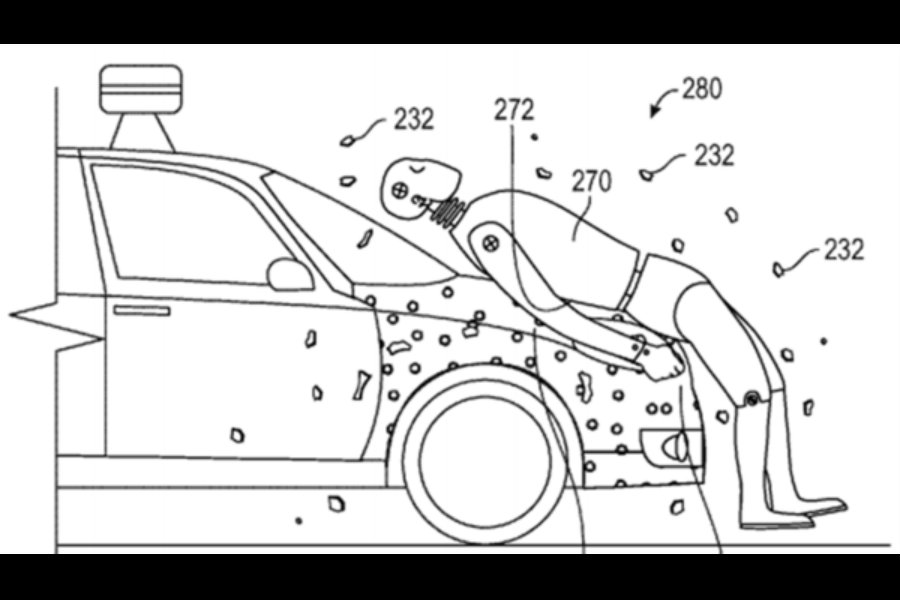To solve the problem of smart cars colliding into pedestrians, Google has issued a strange but effective solution: a glue-embedded hood to which pedestrians are expected to stick, just like flies.
Although the company made a significant emphasis that the product may or may not be used, the idea serves as a statement on the innovation abilities of the tech-giant.
Supposedly, the cover is to behave like an eggshell, being a very thin cover that would only break when a collision occurred.

Flypaper for humans
The system will not completely avoid humans being harmed by a collision, but it will significantly reduce the damage as the person will not fall to the floor and will not be launched forward due to the crash. The subsequent collisions are often more dangerous than the initial collision itself, so this idea is not completely off-the-hook as it may help save a significant amount of lives.
The reason why people wear helmets is not to avoid being hit in the head, but to specifically stop the floor from damaging the skull as it is a gravity pivot that oftentimes ends up bouncing on the pavement after a traffic collision.
“The front region of the vehicle may be coated with a specialized adhesive that adheres to a pedestrian, and thus holds the pedestrian on the vehicle in the unfortunate event that the front of the vehicle comes into contact with the pedestrian,” the patent reads.
Referring to the implementation of the system, a Google spokesperson let known that the company tends to issue patents on many products and ideas, but not all of them become real products and services.
A collision-prevention system for Google’s self-driving cars would be of great benefit since there is a big concern on what would happen if a smart car killed a person. Google is currently testing its smart cars in California, Texas, Washington and Arizona, and partnerships with car manufacturers are also taking place in order to increase their availability.

Each year, around 33,000 deaths in the U.S. can be attributed to traffic collisions and irresponsible driving. By allowing cars to be self-driven, a number of collisions will be reduced because the car itself will be aware of the presence of other vehicles. The glue-embedded coating will also serve as an additional layer of safety for everyone, reducing the chance of permanent harm for both drivers and pedestrians.
In spite of all this, Google has previously announced that their cars “will hit pedestrians” until technology is advanced enough to “avoid all accidents.”
Stanford Law professor Bryant Walker Smith applauded Google for thinking about the safety of those that are outside the vehicle. He stated that car manufacturers excel at rendering cars safe for their occupants, but have not done enough to preserve the lives of pedestrians involved in car crashes.
“The history of progress is replacing one set of problems with another set of problems and just really hoping that your new set of problems in aggregate is less than your original problem,” he praised Google’s flypaper-for-humans idea.
Source: San Jose Mercury News
